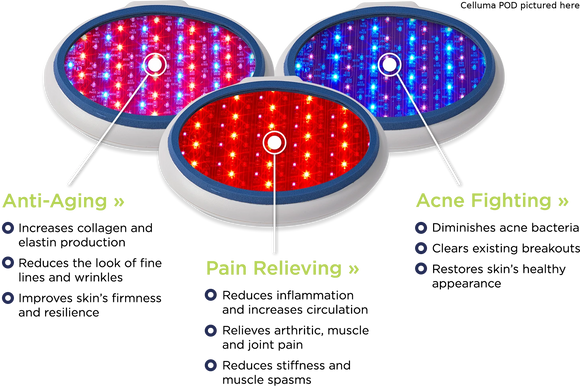In the world of skin health and aging, the significance of mitochondria extends far beyond their role as mere cellular power generators. These microscopic "cell batteries" are instrumental in influencing our skin's health, appearance, and the aging trajectory.
The Role of Mitochondria in Skin Function
Mitochondria are crucial for converting nutrients into adenosine triphosphate (ATP), the primary energy carrier in cells. This process supports numerous vital skin functions, including cell renewal, wound healing, pigment production, and defense against environmental damage.
However, mitochondria can suffer damage from various sources, such as UV exposure, pollution, and the natural aging process, leading to mitochondrial dysfunction and oxidative stress. This condition occurs when harmful reactive oxygen species (ROS) overwhelm the body's antioxidant defenses, contributing significantly to the skin aging process and manifesting as wrinkles, uneven skin tone, diminished elasticity, and slower healing.
Mitochondrial Dysfunction and Cellular Aging
Mitochondrial dysfunction plays a pivotal role in accelerating cellular aging. Damage to mitochondrial DNA (mtDNA), spurred by both inherent aging processes and external factors like sun exposure, impairs the mitochondria's ability to efficiently produce energy. This deficiency compromises the skin's ability to regenerate, maintain its protective barrier, and fend off microbial threats.
The accumulation of oxidative stress in the skin not only accelerates the aging process but also exacerbates conditions like uneven skin pigmentation, and the onset of hair greying or thinning. I can not emphasize importance of maintaining mitochondrial health for retaining optimized and proper function.
Leveraging Light Therapy to Enhance Mitochondrial Function
Light therapy has been shown to enhance mitochondrial function and combat cellular degeneration. Specific wavelengths of light, particularly in the red and near-infrared spectrum, can penetrate the skin to stimulate mitochondrial activity, boosting ATP production. This process revitalizes skin cells, promoting healing, reducing inflammation, and alleviating signs of aging. Achieving the desired therapeutic effects on cells requires a precise set of optical parameters. To ensure effective light therapy, it is essential to start with the selection of the correct wavelengths; specifically, blue, red, and near-infrared. These wavelengths have the strongest backing from scientific research for their effectiveness in low-level light therapy. The effectiveness of LED therapy relies heavily on the precise delivery of energy and adherence to proper treatment guidelines. The placement of the device and its closeness to the skin play a pivotal role in LED light therapy, a detail that is frequently underestimated ... we want to ensure the therapy's maximum efficacy is feasible in enhancing the tissue's capacity to absorb energy optimally.

Just as plants harness chlorophyll to transform sunlight into usable energy, high-intensity light-emitting diodes (LEDs) that emit specific, optimal wavelengths of light can stimulate a natural, beneficial response in human tissues. Studies have shown that LED therapy, or phototherapy, can enhance circulation, speed up tissue repair, eliminate acne-causing bacteria, reduce inflammation, improve the condition of acne-prone skin, as well as skin tone, texture, and clarity, diminish under-eye wrinkles, and relieve muscle and joint discomfort, stiffness, spasms, and arthritis-related pain.

The research suggests that cells capture light particles (photons) and convert their energy into adenosine triphosphate (ATP), the energy currency cells use. This boost in ATP then fuels metabolic activities; supports the synthesis of DNA, RNA, proteins, enzymes, and other necessary elements for cell repair or regeneration; promotes cell division or proliferation; and helps maintain cellular balance. In essence, the LED phototherapy acts as a supplementary energy source, enhancing cell function. For instance, fibroblast cells can ramp up their production of collagen and elastin in the connective tissue, leading to the reduction of fine lines and wrinkles on our skin and expediting wound healing.

Practical Applications for Skin Health
The connection between mitochondria and skin health opens up new avenues for skincare and optimizing aging. Treatments and products aimed at supporting mitochondrial function have the potential to decelerate the skin aging process and enhance the skin's appearance and health. This includes light therapy and the use of antioxidant-rich skincare products that protect mitochondrial integrity by neutralizing ROS.
Additionally, lifestyle modifications that minimize oxidative stress, such as limiting sun exposure, avoiding smoking, and consuming a diet rich in antioxidants, can further support mitochondrial health and thereby skin health.
Mitochondria are indispensable for sustaining skin health and vibrancy. By nurturing mitochondrial function through specific treatments like light therapy and adopting health-conscious lifestyle choices, we can counteract the impacts of aging and environmental damage on our skin. As research continues to unravel the complex relationship between mitochondria and skin health, the prospects for developing innovative skincare solutions that effectively rejuvenate the skin grow increasingly promising.
